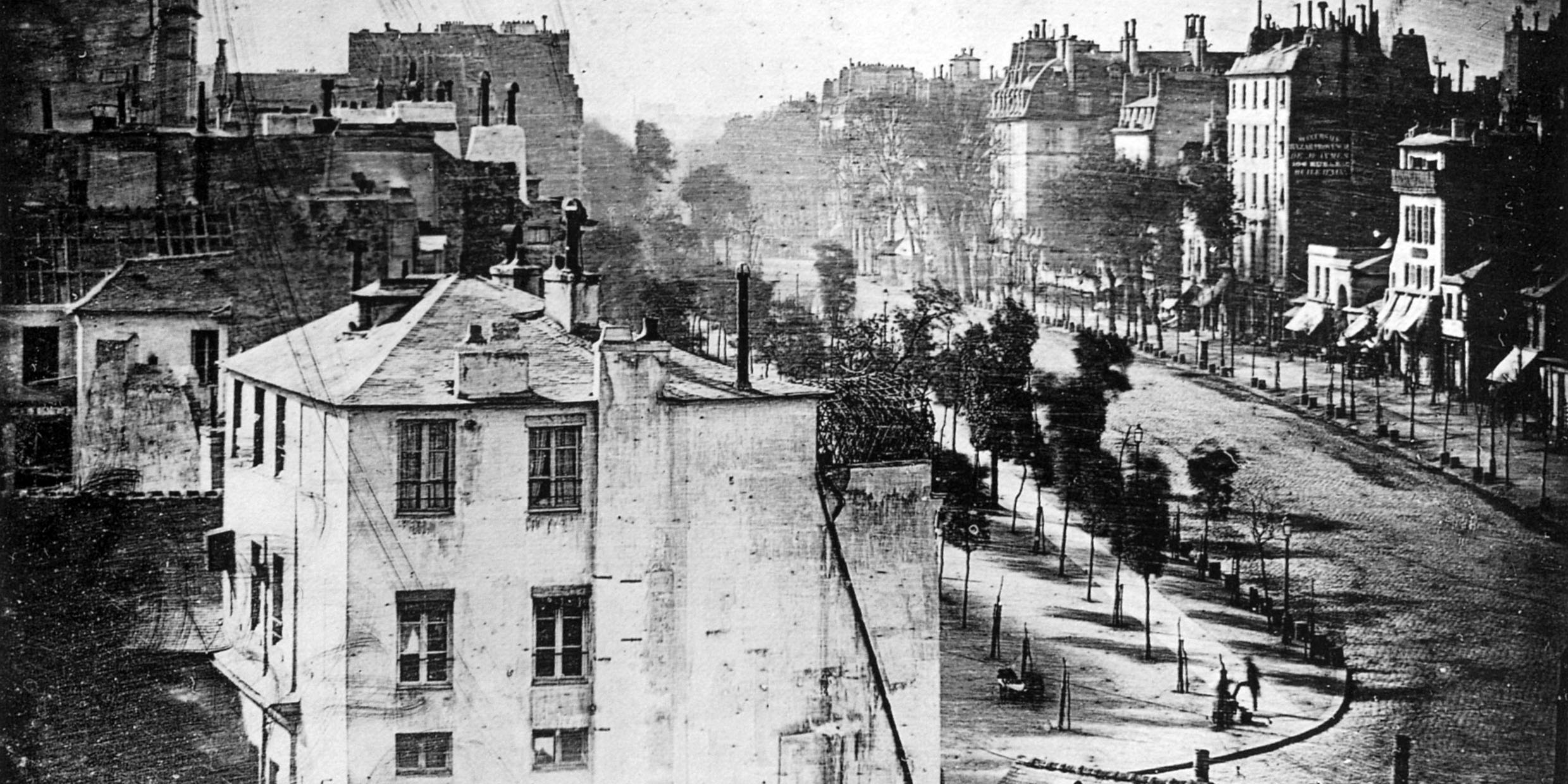Originally published 27 November 1989
One day in Paris, in 1827, a certain Madame Daguerre approached the famous chemist Jean Dumas. Her husband was obsessed, she said, with an apparently foolish idea. He believed he could make permanent pictures on metal plates by means of light focused by a lens. Was his dream within the bounds of science, she asked, or was he completely mad?
Dumas was skeptical, but not dismissive. “In our present state of knowledge, it cannot be done,” the chemist replied, “but I cannot say it will always remain impossible.
In fact, Monsieur Daguerre’s dream was an idea whose time had come. For more than a century chemists had known that certain compounds of silver react to light, turning as black as ink when exposed to the sun. The use of lenses to form images upon screens was also commonplace. If the screen were coated with the appropriate chemicals, it did not seem impossible that a picture might be “etched” by light. What was required was a way to stop the sensitivity of the screen once the image had been exposed, and a way to keep the image from fading away. Several investigators in France and Britain were working on the problem.
First cameras
On January 7, 1839, Louis Daguerre demonstrated his successful method for making light-pictures to the French Academy. Less than three weeks later, Henry Fox Talbot appeared before the Royal Institution of Great Britain with the results of his own investigations. Their work caused a public sensation. As if by magic, images of the world fixed themselves upon metal plates or sheets of paper without intervention by an artist. Talbot called his invention “the pencil of nature.”
A little optics. A little chemistry. A little madness.
This year [in 1989] we celebrate the 150th anniversary of the invention of photography. As part of that celebration, the MIT Museum and the Polaroid Corporate Archives have arranged an exhibit on the history of photography at the MIT Museum in Cambridge: “Image and Imagination: 150 Years of Photography.” It’s a must for anyone who has ever been touched by the madness and magic of the camera.
On display are hundreds of historical and fine art photographs from local collections, including works by Ansel Adams, Margaret Bourke White, Walker Evans, Aaron Siskind, Minor White, Garry Winogrand, and dozens of other artists who have used the magic of photochemistry to teach us how to see. The photographs are reason enough to visit the museum, but even more interesting are the exhibits tracing the history of photographic technology.
Here are cameras from the age of Daguerre and Talbot — polished wooden boxes, the size of small chests, with lens tubes of gleaming brass — and the images made by these instruments. Daguerreotypes, wonderfully sharp, glistening in their display wallets of leather and velvet, the color of copper and iodine. And Talbot’s paper calotypes, the first photographs printed from a negative, softer, less crisply defined, like charcoal drawings.
A pivotal exhibit is George Eastman’s Kodak No. 1, the camera that brought photography to the masses (“You push the button, we do the rest.”). A year after its introduction in 1888, Eastman had sold 13,000 cameras and his plant in Rochester was processing 7,000 negatives daily. The No. 1 came loaded with enough film for 100 exposures; for 10 bucks you got a reload and your developed prints. No more messy chemicals, no more bulky equipment. The age of the snapshot had arrived, and Kodak became a synonym for “camera.”
Other history-making cameras are on display: Frank Brownell’s “Brownie,” the kid’s camera of choice from 1900 till 1954. The Graflex, fast and sharp, the news photographer’s favorite. Oskar Barnack’s 35mm Leica that revolutionized photojournalism by putting precision optics and high-resolution film into a hand-held package.
Instant pictures
But no feature of the exhibit so captures the imagination as Edwin Land’s Polaroid SX-70, the first instant color camera. Land had previously made history with his 1947 picture-in-a-minute, black-and-white camera. Snap, pull, wait, peel, presto, a picture! The black-and-white Polaroid was a marvel; the SX-70 was a miracle.
In the late 1960s, Land called his engineers together and gave them a pocket-sized block of wood. Create a camera no bigger than this, he said. Color film. Picture ejected instantly and automatically from the camera. Self-developing outside of camera. No development timing. No peeling apart negative and positive sheets. No waste to dispose of. No coating of print. No print mount to attach. No exposure settings. No chance for double-exposure. In short, an impossible assignment.
But, of course, the impossible was possible. All prototypes of the SX-70 are on display, including that original block of wood. The final product, introduced in 1972, is more than technical wizardry; it is also a work of art — an elegant fusion of chemistry, mechanical design, optics, and electronics, as powerfully demonstrative of the powers of imagination as any photograph in the exhibit.
In this day when America’s business leaders seem content to amass phony fortunes by shuffling assets, rather than by innovation and productivity, it is good to be reminded of the achievements of George Eastman and Edwin Land. Like Louis Daguerre, they dreamed of the impossible and possessed the imagination to achieve it. Their wonderful instruments, on display at the MIT Museum until December 31st, represent American technology at its best.



